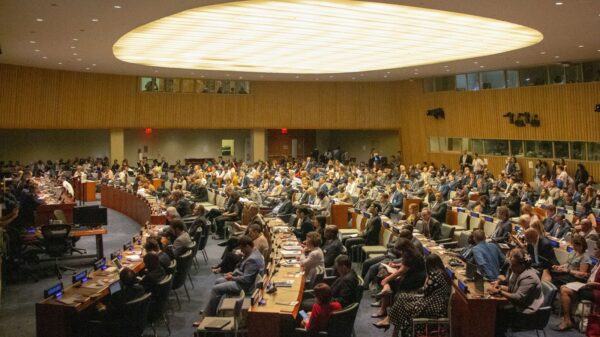
Companies worldwide are bracing for supply chain shocks following attacks on commercial vessels in the Red Sea. Tesla and Volvo have anticipated delays in their manufacturing processes, while Ikea is prepared for price cuts. These disruptions are attributed to the attacks played out by the Houthis.
The Houthis, also known as Ansar Allah (supporters of God), are an armed group controlling most parts of Yemen. They came into prominence in 2014, when they took down the Yemeni government and sparked an almost-decade-long humanitarian crisis in the region, according to Al Jazeera. The group, backed by Iran, has also been at odds with the military coalition of Saudi Arabia for years.
Yemen, a small nation on the Arabian Peninsula, endures a tragic civil war pitting the internationally-recognized government, backed by a Saudi-led coalition, against Iran-supported Houthi rebels who toppled the government.
In 2023, the Houthis came to the international spotlight because of the Israel-Palestine conflict. The Yemeni government has been supporting Palestine since Yemen unified in 1990 and even voted in favor of resolutions supporting a Palestinian state at the United Nations in 1990. It has consistently provided financial and political support to them over the years.
Now, at the height of the war on Gaza by Israel, the Houthis have vowed to stop any ships linked to Israel. The attacks started in mid-November of 2023 when they launched attacks on ships sailing through the Red Sea and Suez Canal.
The Bab-el-Mandeb Strait is a 20-mile-wide strait between Djibouti and Yemen. It’s the key to controlling almost all shipping between the Indian Ocean and the Mediterranean Sea using the Suez Canal. The Houthis have access to the region and have been able to intercept ships in the area.
Approximately 12 percent of global trade and about one-third of the trade for Asia and Europe passes through this area, according to New Zealand Foreign Affairs & Trade. This includes significant amounts of crude oil, threatening global energy flows.
When significant security concerns challenge this trade, the resulting supply chain issues and increased costs impact millions. Many cargo ships and cruises have been forced to reroute through the southern tip of Africa, increasing costs and shipping time, according to Time Magazine.
J.P. Morgan Research estimates that the disruptions could add 0.7 percentage points to global core goods inflation and 0.3 percentage points to overall core inflation during the first half of 2024. This means the additional time and expenses caused by the Houthi attacks could raise fuel prices and the availability of goods, resulting in higher inflation.
Experts also predict that these disruptions will likely last months but not longer due to international intervention.
Head of the European Automotive team at J.P. Morgan Jose Asumendi said, “Depending on the situation in the region, shipping times and prices may change throughout the year. Traffic in the Red Sea may remain low for the foreseeable future.”
Amidst the disruptions, the suffering of citizens in Yemen and Gaza cannot be overstated. Their adversity brings to light the need for a resolution that is both diplomatic and focused on humanitarian relief. Addressing these challenges requires a balanced approach, one that not only aims to secure peace but also mitigates the economic repercussions felt by citizens around the globe.
Kritika Pant, a sophomore computer science major at Howard University, shows apprehension about this issue.
“The costs here are already rising as is, and the constant disruptions such as the supply chain issues make me nervous about the future, as access to goods and services might get harder,” she said.
In December 2023, The United States launched a multi-national security initiative consisting of 10 nations. Since then, the U.S. and the U.K. have consistently launched missiles and attacks against the Houthis. The U.S. has also been accusing various militia groups in Iran of attacking U.S. troops at bases in Iraq, Syria and Jordan, according to a report by the White House.
Amidst the escalating tensions in the Middle East, particularly around critical maritime chokepoints, the pandemic-strained global supply chains face further shadows of uncertainty. The blockade and threats in strategic regions such as the Bab-el-Mandeb Strait and the Suez Canal have not only heightened geopolitical risks but have also put the fragility of our interconnected supply networks into the spotlight.
Dr. Zainab Alam, an assistant professor in the political science department at Howard University, spoke on this dispute.
“Yemen sits on the precipice of an unprecedented humanitarian catastrophe after a decade of brutal war. Millions are displaced, food is scarce and millions more teeter on the brink of famine,” she said. “The recent conflict concerning the Houthi rebels in the Red Sea is only one aspect of this devastating situation.”
Alam also said, “While securing peace in the Israeli-Palestinian conflict may seem like it could temper the current troubles in the Red Sea, a potential ceasefire would likely only temporarily de-escalate the conflict.”
Her point highlights the opinion of experts who believe the Houthis are trying to gain more international support. Many see this conflict as a proxy war for regional dominance. It has fueled epidemics like cholera, caused medicine shortages and threatened millions with famine.
The growing conflict in the Middle East has frightened Palestinian and Yemeni citizens, who find themselves caught between the Houthis and U.S. strikes. The ongoing conflict has displaced millions, creating a refugee crisis.
Safeguarding maritime trade in the Red Sea requires a multi-faceted approach involving the collaboration of regional powers, like through the Regional Cooperation Agreement on Combating Piracy and Armed Robbery (RECAAP) in the Red Sea and the Gulf of Aden, or international organizations like the International Maritime Organization (IMO).
Forming an international coalition, possibly under the United Nations’ guidance, to secure maritime routes could prevent disruptions in international waters. Countries should also diversify their economies and supply chains to reduce reliance on key chokepoints like the Suez Canal and Bab-el-Mandeb Strait.
Investing in technology such as satellite surveillance and AI for threat detection can secure shipping routes, ensuring a more stable and resilient global trade system.
We need a solution that adheres to different geopolitical and environmental scenarios. In addition to addressing the root causes of conflict, coalition patrols and diplomatic efforts can also serve as conflict prevention measures.
The ongoing conflict in Yemen emphasizes the need for peace efforts, aid and a commitment to peace above politics. These actions are crucial for giving Yemen’s people hope and guiding them toward a stable and better future.
Copy edited by Jalyn Lovelady













